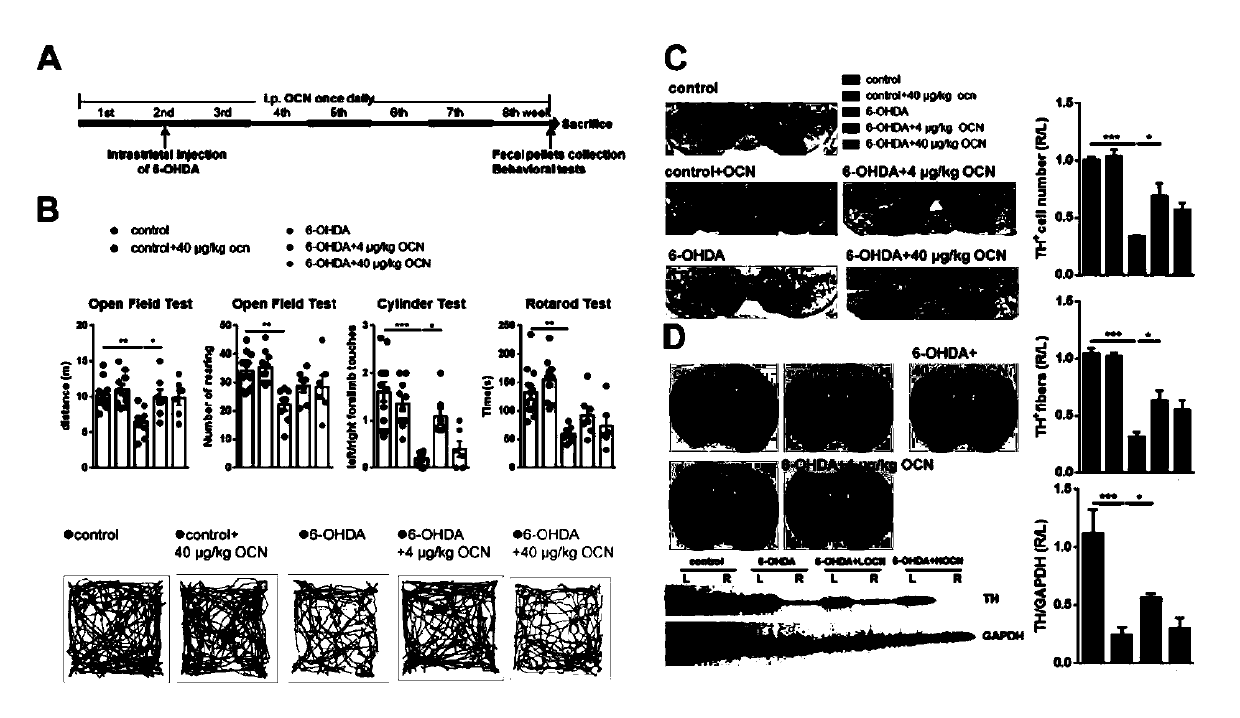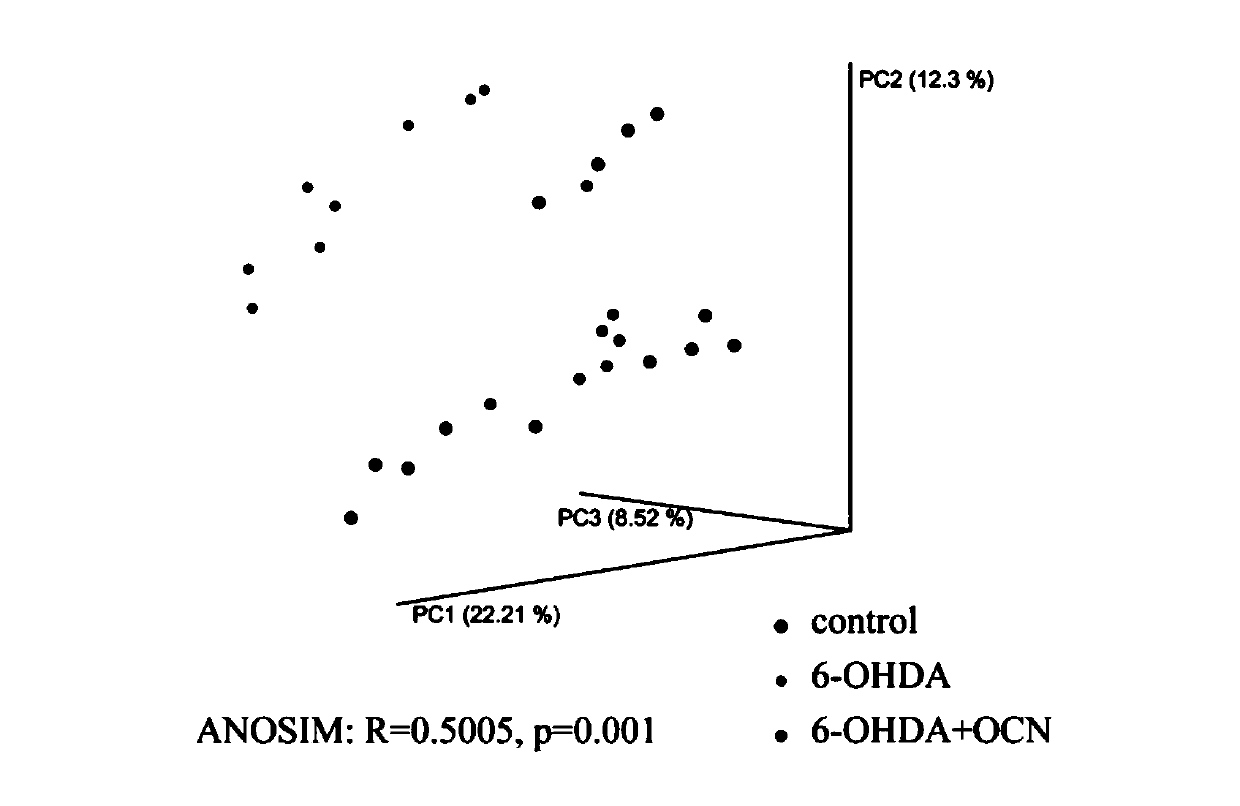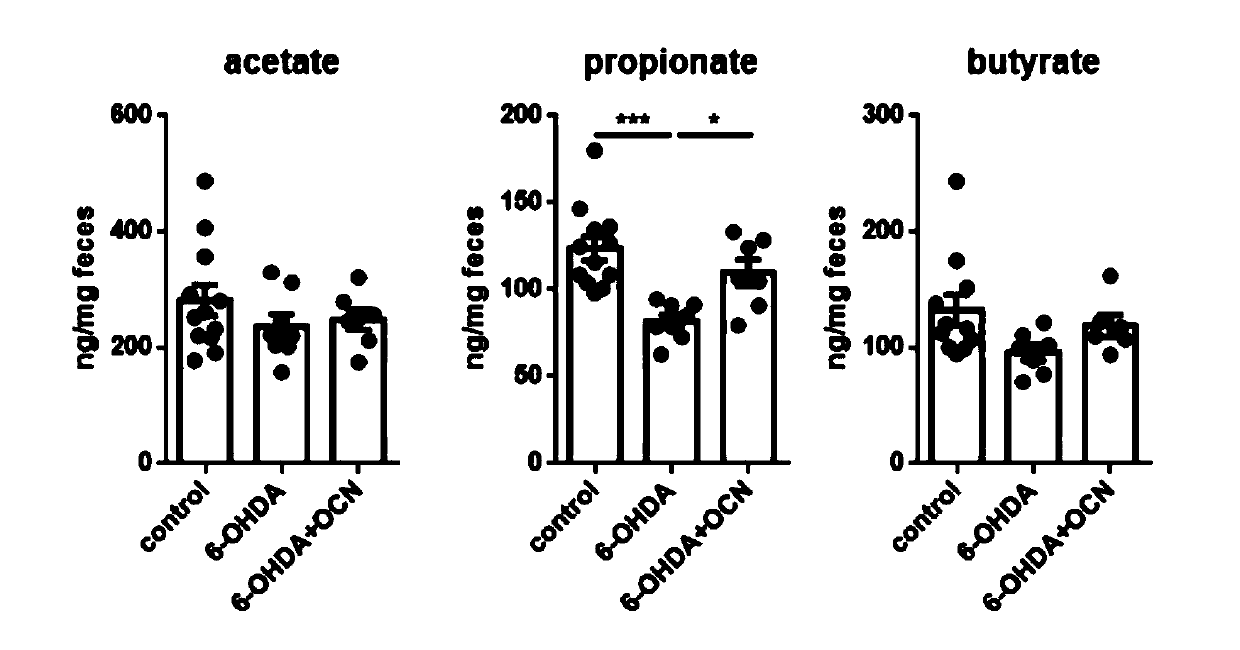Application of osteocalcin or propanoic acid to preparation of anti-parkinson's disease drug
A technology for Parkinson's disease and osteocalcin, applied in the field of application of osteocalcin or propionic acid in the preparation of anti-Parkinson's disease drugs, can solve the problem that the progressive loss of dopaminergic neurons cannot be delayed
- Summary
- Abstract
- Description
- Claims
- Application Information
AI Technical Summary
Problems solved by technology
Method used
Image
Examples
Embodiment 1
[0021] 1. Animal experiments 1
[0022] C57BL / 6 male mice (25-30 g) purchased from Beijing Weitong Lihua Experimental Animal Technology Co., Ltd. were divided into 5 groups according to the principle of body weight matching (control group, control+4μg / kg OCN group, 6-OHDA group, 6-OHDA+4μg / kg OCN group and 6-OHDA+40μg / kg OCN group) were raised in the SPF environment of the Experimental Animal Center of Minhang Campus, Shanghai Jiao Tong University. After the mice adapted to the new environment for a week, intraperitoneal injection of OCN was started, once a day, and a week later, the PD mouse model was constructed by injecting 6-OHDA into the right striatum, and the OCN intervention was continued until 8 weeks after the intervention. Carry out the following experiment to 5 groups of mice (experimental procedure sees figure 1 A).
[0023] ①Effect of intraperitoneal injection of OCN on the motor function of 6-OHDA-induced PD mice.
[0024] After intraperitoneal injection of ...
PUM
 Login to View More
Login to View More Abstract
Description
Claims
Application Information
 Login to View More
Login to View More - R&D
- Intellectual Property
- Life Sciences
- Materials
- Tech Scout
- Unparalleled Data Quality
- Higher Quality Content
- 60% Fewer Hallucinations
Browse by: Latest US Patents, China's latest patents, Technical Efficacy Thesaurus, Application Domain, Technology Topic, Popular Technical Reports.
© 2025 PatSnap. All rights reserved.Legal|Privacy policy|Modern Slavery Act Transparency Statement|Sitemap|About US| Contact US: help@patsnap.com



